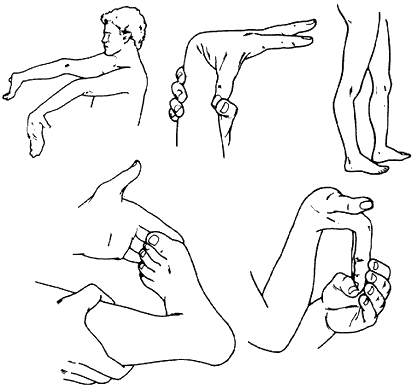Ehlers-Danlos Syndromes
What are Ehlers-Danlos Syndromes?
Ehlers-Danlos Syndromes are a group of genetic disorders that impact a person’s connective tissue, which is found in between and around all tissues, organs, and joints. Connective tissue provides strength and flexibility in the body. When connective tissue is impacted by Ehlers Danlos Syndromes, diagnosis can be difficult because depending on what type of EDS one has, the symptoms may look different person to person. Diagnosis of EDS is dependent on which subtype is speculated and may include genetic testing.
Classification
There are currently 13 types of EDS defined by The International Consortium on EDS and Related Disorders’ 2017 criteria. Twelve of the 13 defined types are caused by specific known gene variants that require genetic testing for definitive diagnosis. Hypermobile type (hEDS), the most common form of EDS, includes individuals who meet other EDS diagnostic criteria but lack a known gene variant.
Current research is focused on identifying and defining currently unclassified genetic variants that cause EDS. For further questions about the new 2017 classifications, please see the EDS Society's 2017 Classification FAQ.
Symptoms Overview
Nearly all types of EDS share the symptoms of hypermobility and joint laxity. Other symptoms include, but are not limited to; soft fragile skin, easy bruising, slow healing, vascular abnormalities, autonomic dysfunction, and more. EDS is a spectrum disorder, meaning that symptom severity varies by type and in each individual patient. Each type can cause minor to severe deficits in joints, tissue, organ systems, and skin integrity, impacting patients' overall quality of life.

What does EDS have to do with Dysautonomia?
EDS patients can experience a variety of symptoms of dysautonomia at higher rates than the general population. Two of the most common types of autonomic dysfunction experienced by EDS patients include Orthostatic Intolerance (OI) and Postural Orthostatic Tachycardia Syndrome (POTS).

Answers to your live chat questions:
Learn how to spot a "zebra":
Additional Resources:
De Wandele, I., Rombaut, L., De backer, T., Peersman, W., Da Silva, H., De Mits, S., De Paepe, A., Calders, P., & Malfait, F. (2016). Orthostatic intolerance and fatigue in the hypermobility type of Ehlers-Danlos Syndrome. Rheumatology,55(8), 1412-1420. https://doi.org/10.1093/rheumatology/kew032
Ehlers-Danlos Support UK. (2017). Digestive Disorders. https://www.ehlers-danlos.org/what-is-eds/information-on-eds/digestive-disorders/
Genetics Home Reference. (2017). Ehlers-Danlos Syndrome. U.S. National Library of Medicine. https://ghr.nlm.nih.gov/condition/ehlers-danlos-syndrome
Hakim, A. & Grahame, R. (2015). Autonomic dysfunction. Ehlers-Danlos Support UK. https://www.ehlers-danlos.org/information/autonomic-dysfunction/
Mayo Clinic. (2020). Ehlers-Danlos Syndromes. https://www.mayoclinic.org/diseases-conditions/ehlers-danlos-syndrome/symptoms-causes/syc-20362125
The Ehlers Danlos Society. (2020). What are the Ehlers-Danlos Syndromes? https://www.ehlers-danlos.com/what-is-eds/


